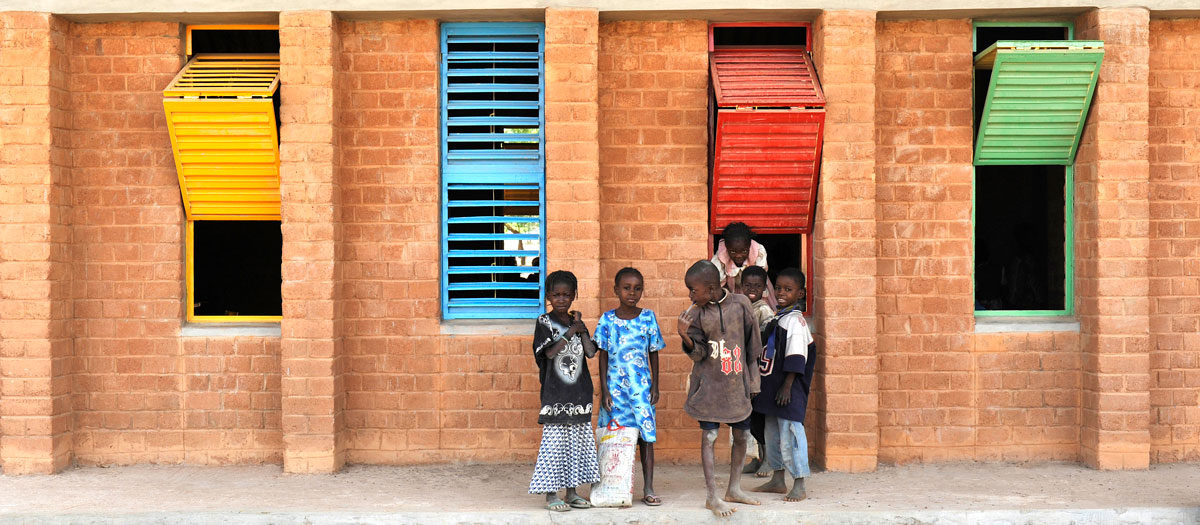
Diébédo Francis Kéré, Pritzker Prize 2022
"My own target was to forward education to my home people, so that, should I be gone, there would be one, two or three other people capable of taking over," said Francis Kéré (born Diébédo Francis Kéré, 1965) during a conference at the Cité de l'architecture et du Patrimoine in April 2009 as part of the 3rd Global Award for Sustainable Architecture. Already at that time, the generosity and talent of the Berlin-based Burkinabé architect made an impression. 14 years later, this Pritzker is one of the most pleasing of recent years. Here is an excerpt from this memorable lecture published in AA 374, available on our e-shop.
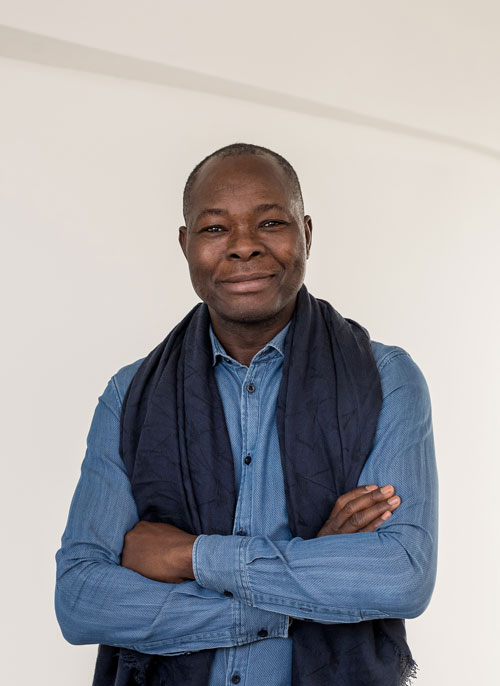
Ladies and Gentlemen, I am from Burkina Faso, a country in which more than 80% of the population is illiterate. Quite obviously, in this era of the Internet, gigabyte, iPhone and globalisation, most people have never heard of architecture or architects. However, houses are being built. Due to lack of guaranteed income, people build their house themselves, and use a neighbour’s new house as a model. Over there, they are happy if a wall is straight, and can resist the rain period. That, Ladies and Gentlemen, is the world I come from. I guess I don’t have to emphasise, since I was born in Gando, what privilege I was granted to have become an architect in Germany, in Berlin, and to be here today. So you should not expect from me a speech on the future of modern architecture in general, and in particular in the emerging countries. That would be asking too much. I will however explain to you how, together with my home people, we try to build proper houses, and can withstand several rain seasons. This is Africa, and there is Burkina Faso. As you can see, the country is landlocked, which means that during periods of the year, people suffer from water restrictions.
The capital city is Ouagadougou. There, on the left are the areas called “informal”, and, on the right, those referred to as “formal”. Ouagadougou is burdened by rural migration. Every year, thousands of young Burkinabe leave their village and travel to Ouagadougou.
They hope to find there better living conditions. So they come there, build their own houses and settle, most of them permanently, and those are the houses referred to as “informal”. The common solution consists in pulling down existing structures and drawing straight lines. That is what we call town planning.
Ladies and Gentlemen, this method may appear to you to be rather ruthless, but we do indeed have an example, a sizeable model we want to copy: it’s your own culture. We are told that everything that comes from Africa should not be considered because it is primitive. Account taken of the strength of your economy, your political power and the overwhelming influence of your media, your culture seems to dominate the world. So you do impose your culture on many people, and on many cultures.
I am not referring to you – you are in my heart; you, as well as I, want things to change, and that is why I am standing before you. Just look around you. How many people here actually look like me? Just look, turn around, very few people! But I am referring to the establishment system that is what I am talking about. So quite simply, we want our Champs-Elysees, our Eiffel Tower. We build glass houses, which force us to fit air-conditioning so we can live in them. Today, Ladies and Gentlemen, be aware that China has become a model for us. People travel, they buy cheap goods and copy the Chinese building techniques. This is why you will come across such buildings in Burkina Faso. This gentleman, for instance, believes that Chinese plastic tiles are not enough to reflect his social status. So what does he do? He gives this concrete beam the appearance of wood, to display his tastefulness for architecture. He may have seen one here in France, or in Spain. That is reality at home, it is our reality.
But I want to take you to an African village, typical of where any African comes from. I come from a village, and this is a traditional dwelling. People live as a community. They build their house together and live off agriculture.
Over there, there is no health insurance; the community is the core of survival. Architecture
in rural Burkina Faso is just like that: you get up. You build, there are no drawings. The neighbours join in and help. This beautiful composition however did not sprout from imagination. More plainly, the houses must be painted to protect them from rainwater and, for this purpose, people must get up and fetch a large tree that will produce enough dye. Nature however is not a factory, and that is why these houses are of different colours. And while we are at this stage, and if you ever have an opportunity of talking to the Unesco, I beg you to do everything in your power to ensure that no African village is ever placed under the protection of this organisation. It would mean punishment for the locals. An allotment, a traditional abode is supposed to change size according to the requirements.
Just look: it is the same allotment, the colours have faded after the rain season. Should it be put under Unesco safeguard, you will return one year later and think: “these Africans cannot comply with an agreement. They’ve changed the colour.”. It is not them, it’s Nature! In Burkina Faso, most houses are made of clay. Using such material is very easy, and it works very well on a limited scale, like here.
This is a shop, that you may believe is a small house; to my home people, it is a large supermarket. One can find anything one wishes there: Omo washing powder, cigarettes, peanuts, paracetamol… But no insurance. Should this house collapse, then the whole family will rebuild it in less than two days. That is the way building work is carried out in Burkina Faso.
Working with clay however has its downsides. So do not tell anyone in my home Country that it looks nice, that it’s picturesque! It does not make them happy. Look at the rain, the rising water that destroys houses, the fire that wrecks through them and reduces to ashes all that people have stockpiled such as cotton, fabrics, cereals… This is why they want to change their life. And what they see is the way you do it, the way you live and the way you build, which they want implemented for a public building, a school.
I was lucky enough to go to Germany and, when one leaves Africa, one has to send money back to the family; I could not do that because I have a large family. I then realised that what is fundamental to your culture is education. Therefore, as a student, I started fighting to build a school in my village. And that is what I wish to talk to you about.
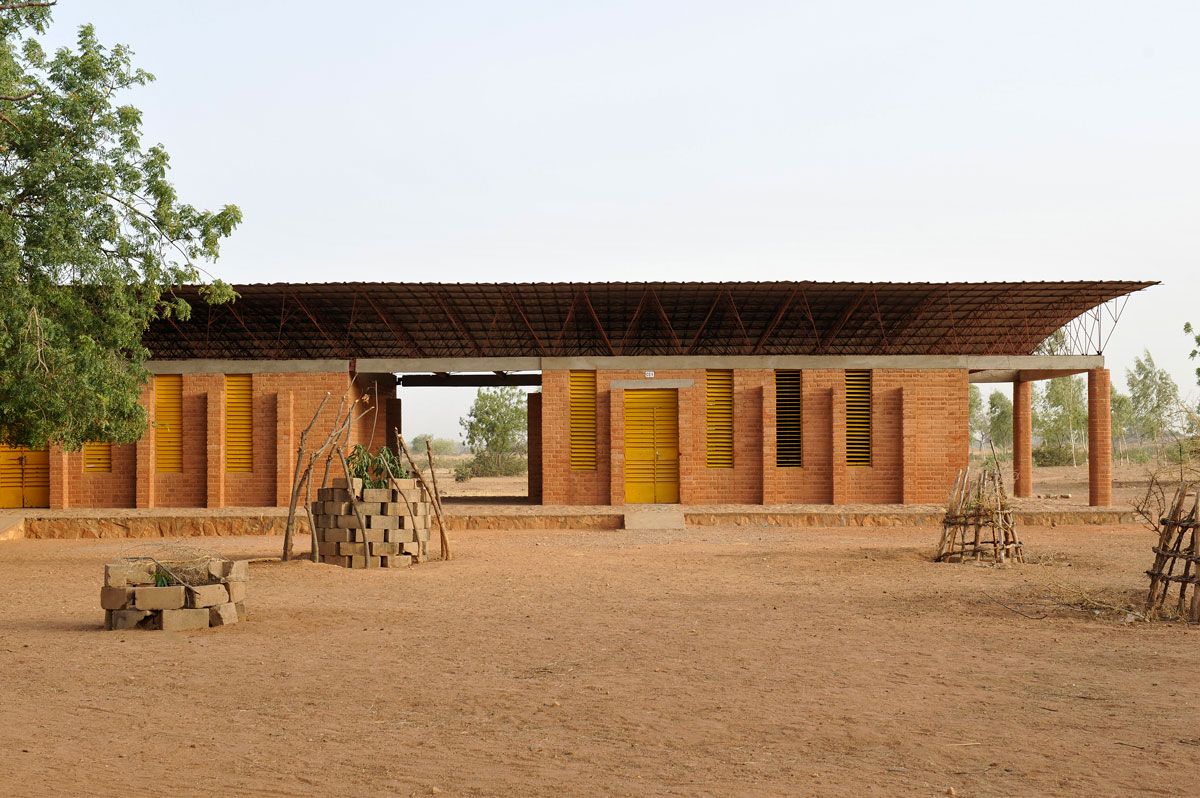
Well, this is how we completed this project in 2001. Using clay, as you can see. Of course, there is sheet iron all over Africa, as you can see on the left, and we used 14 and 16 mm concrete reinforcement steel bars for the framework. It is not about showing you nice pictures, but I will show you how, all together, we managed this building project. The whole village is gathered. The women are there, the mothers, the young girls and the elderly. Ladies and Gentlemen, if you have a project in Africa and if you are supported by the elderly women and men, you can be assured that you will succeed. Why? Because in a country where tradition is transmitted orally, it is the one who has lived longest who has the know-how and the wisdom. This is why it was very crucial for our project to receive the support of the whole village and of the elderly. And it worked out. So we used the stones for the foundations, because it allows to save money. And as you can see, houses grow with the strength of the village.
Even the children are involved in the project. But please do not report us, do not put us in jail! It is an integral part of our project, and that is Africa. It was difficult not to allow the children to help us. It would have been a disaster, because such an event had no precedent. Each and everyone wanted to be part of it. They wanted to work, and look how happy they are. This is not a photograph taken especially to be displayed before you, by no means! It was taken for mere pleasure.
And look also how many people are required to lift it up. No need for a crane, the people are there to build their future.
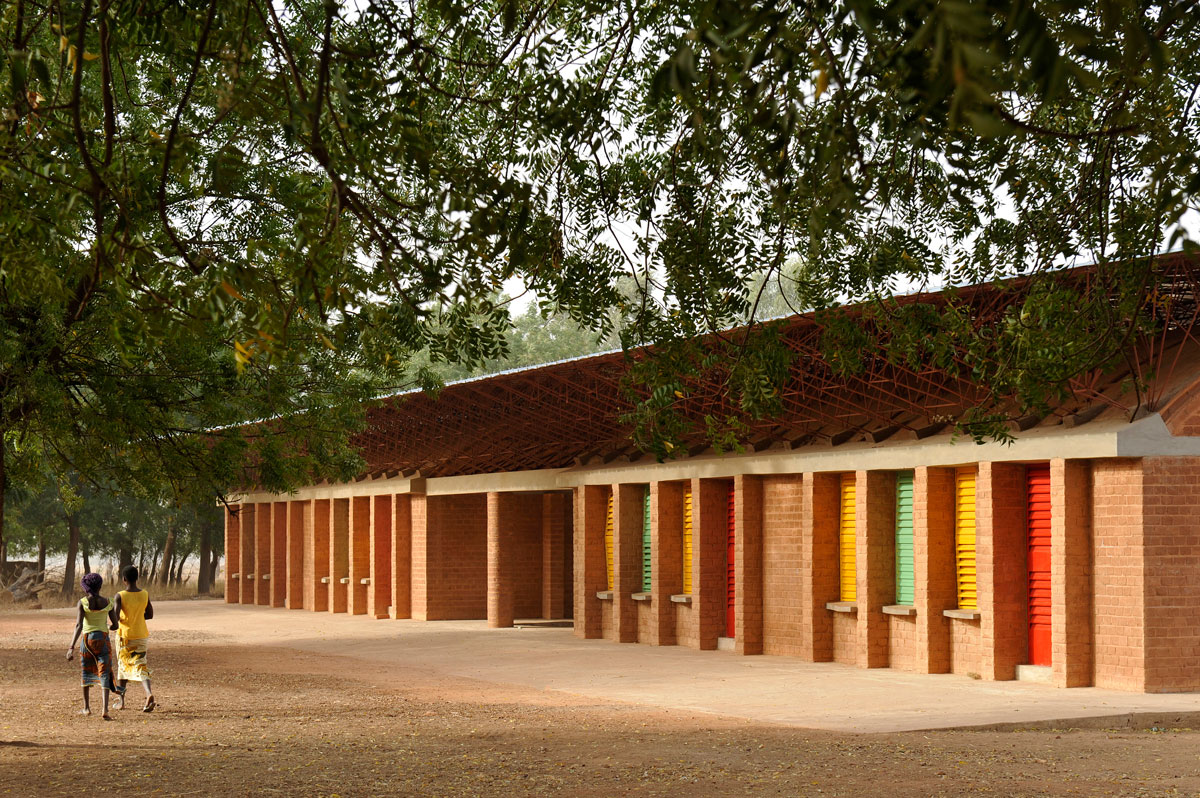
This is the first school that was built. Inside, there is no more sheet-iron, but a roof and a clay ceiling. A school building like those found in Europe is not fit for the purpose in Africa.
I have a team, but what you cannot see and I can is that the whole village is seated, looking, and that one after the other, the people approach and climb onto the structure. If it collapses, it means that the technology is wrong and should be ditched. If it doesn’t, then the technology is fantastic. So that is the way we proceed.
What happens then? Gradually, it becomes a habit often dangerous for me, because everyone wants to climb on it, even the elderly. I cannot say “Stop!” If I do, it means that the technology is inappropriate. I must let each and everyone climb on the structure, and pray God that there is no damage. That is how I work, supported by the eagerness of the people in my village.
People at home are extraordinarily inventive. You just have to explain what you want to achieve, and they show you how to. And the houses simply grow, built by people I trained personally. And, believe me, I am not the most talented, but I could do it because I was trained by your people.
Nowadays, people don’t want schools of the same colour anymore. Why not use different colours, which are nicer to look at, and can be seen from further away?
So you start talking about paint and within 30 minutes, there are ten people who want to be involved in the discussion. An hour later, there are two hundred. Three hours later, the whole village is there, and everyone wants a word with you.
How do you deal with that? They buy fabrics like the ones you can see, cut them up and start talking. Meanwhile, I, Francis, leave. I come here to talk about my work. And when I return, I realise they have achieved something, and I think: “Good God” ! But each and everyone in the whole village comes up to me, and explains that it is him or her who is behind that colour, and that is why the house is so beautiful. You must always remain calm and enjoy, because they are proud of their achievement. And the end-users, the children in this case, are very happy to have that school. They use every nook of it, and play while the teacher is having a sleep. The light in the classroom comes from the top, the air escapes from here, and our students are amongst the best in the Country. As an example, last year – in 2008, and in my region, the average pass rate for the CEP (Primary School Certificate) was 34%. In my school, we exceeded 90%. This is what architecture can achieve, even in Africa.
The women also. They did most of the work, and everybody talks about it. Visitors gather from everywhere, Italy, Spain, the United-States, and even France. And it is to admire their work.
The village women have polished the wall of this very simple house, with its traditional protective coating and sophisticated roofing.
I will now show you how traditional techniques can be used in a house. Remember that when I returned to Burkina, I said: “we are going to build a school”, and everybody shouted “yes! That’s very good”. But when I said: “……but we will build it with clay”.. They did not agree. “No, no, no!, Francis, you are missing out on reality here, you overlook the fact that a clay-built house does not survive one rain season.” “The Germans have twisted his mind. We will wait until his friends have left, and make him listen to reason. That way, he will build us a house with concrete.”
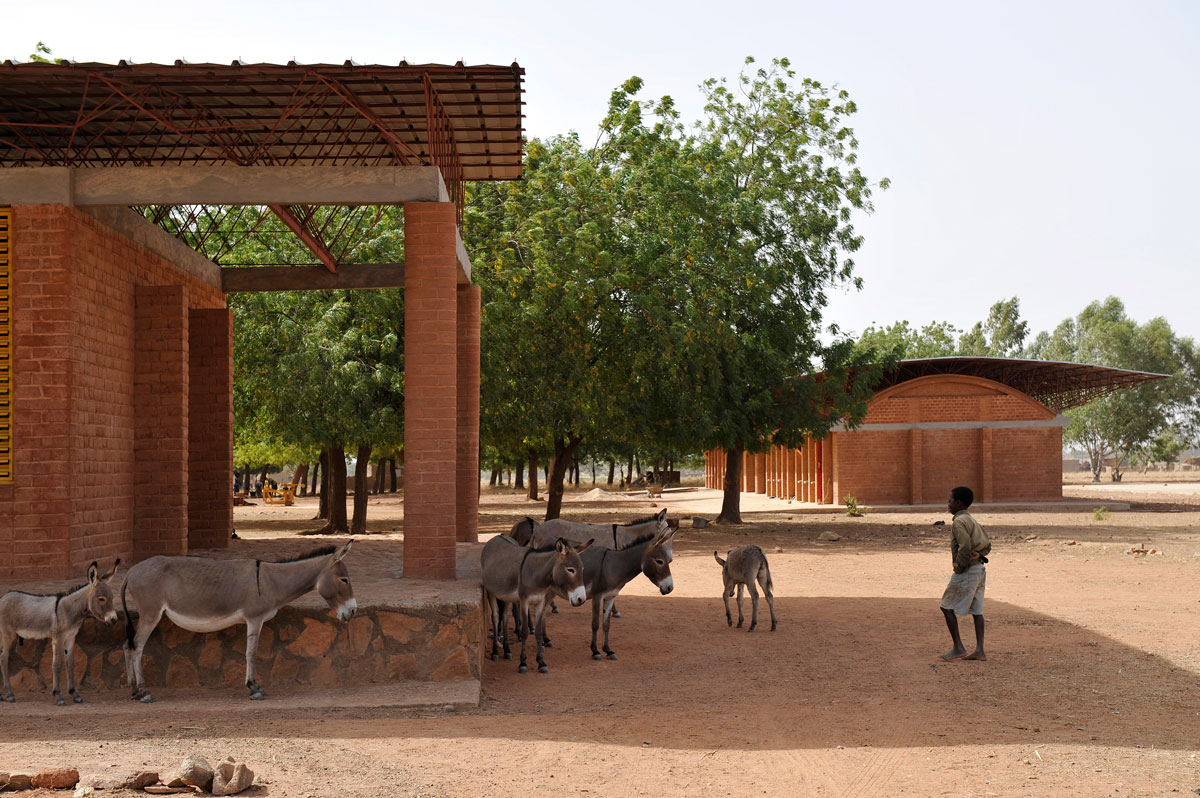
However, Ladies and Gentlemen, the village now allows me to introduce traditional elements in a building, and I will show you how it is done. Look at the women, in a master’s house, beating the ground right up to the corners, adding water. They remain in that position for hours. Look there! You see? That’s the musician. What I have learnt, at home, in my village, is that it is thanks to music that this very, very hard work is bearable! Each pounding the ground, each according to his/her strength. What next then? The music unites everything, and the pounding efforts become the same. This is how we manage to achieve a flat surface. That is what I have learnt at home, working with people. Then is the turn of the “polishers”, bending down with their stones in their hands. They are polishing the ground.
And this is my team. Within this team is Kabila. When one is working on a very tight budget, it is essential to have a negotiator like him. He is the best possible negotiator in Africa. And do not go with him… When he reaches the market, goods that were very highly priced become cheap. The merchants ask him: “how much do you want to pay today?”. He hands out the money and takes the goods. However, if you go with him, what he pays 500 will be charged 50,000, and he will be most unhappy.
There is Baba, the oldest builder. A ‘chap’ full of wisdom, and who knows the meaning of good workmanship.
This is Benjamin, the best builder in the world. He lays slabs, his knowledge is unbelievable.
Amédé is the best labourer in the world. I initially explain our structure on paper. When that is not enough, we use sand. I am still talking, but he has already welded the whole structure!
But the best of all is Couyomo, the musician. He gathers the whole village around the projects. It is also him who livens up the whole village in the evening with his music. On the following day, and especially when heavy loads have to be carried, he is the one walking ahead. This, Ladies and Gentlemen, is what I rely on to carry out my work in Africa. If I may summarise: the first idea is to build for my home people. That works well, believe me. First, there were dwellings, then others to allow the teaching staff to remain in the village. A teacher usually lives in town, because there is neither running water, nor good food supply in the village. Then we had to build an extension, because we had built for 120 children, but there were 300 applications. Today, there are 600 students. Then, our work provides work.
In my village, people do not have to embark on makeshift boats to travel to Spain or Italy, nor do they have to cross to the Ivory Coast to work for 5 months, or even to wait 5 years to be able to purchase a bicycle. No! They can work in Burkina, and earn an income. That is all crucial, and is the reason why I focused on projects in Burkina. You cannot simply picture the pride of the people in my village, now that they have found out that they were capable of all that. My example proves that through education and architecture, we can achieve a lot for people. You may have your own thoughts on the subject. My own target was to forward education to my home people, so that, should I be gone, there would be one, two or three other people capable of taking over.
Children in Africa are very inventive, just like yours. What they lack is professional education. Now that my presentation is coming to a close, I would emphasise that I am not here only to talk about us, about my village. We are now facing challenges due to global warming, the economic crisis, the drying up of resources. I believe it is important to rely on what we have to achieve a result, like this man who uses his mouth to wash his hands with a calabash. Our resources are very restricted, and problems are not only in my part of the world. You too are concerned.

